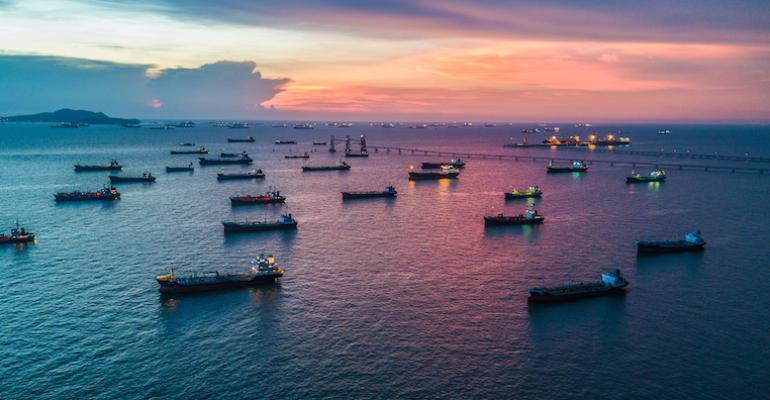Clarksons said that the index calculated in dollars per day, fell by 37% year-on-year, from $37,253 to $23,629 in 2023.
Almost all shipping sectors scored strong results in 2023. The Clarksons Research annual review of shipping markets logged positive progress across the board with the exception of containers and dry bulk.
Global seaborne trade climbed by 3% to 12.3 billion tonnes while world fleet capacity grew by 3.2% to 2.3 billion dwt. Seaborne tonne-mile trade increased by 5% with oil/oil products up by 7%/10%, fuelled by the redistribution of Russian oil flows. Dry bulk trade grew by 4.3% as China came back on stream, but container volumes remained weak, reaching a low point in the summer.
The boxship fleet grew by 8%, prompting fears of a lengthy downturn on key container trades. However, there is growing uncertainty in view of Red Sea hostilities. Clarkson estimates that more than 300 container ships – four million teu – have now been diverted around the Cape of Good Hope, pushing Shanghai-Europe rates up by a factor of three. However, rates are still lower than the Covid 19 peak, the analysts said.
China delivered more than 50% of the world’s new ships for the first time, as global shipbuilding output grew 10% year-on-year. Orders measured in compensated gross tons dipped by 19% but edged upwards in deadweight terms, underpinned by a 235% increase in tanker contracts, admittedly from a low base.
The orderbook now stands at 12% of the fleet but is highly skewed towards container ships and gas carriers. This could prove a constraint on future tanker and bulk carrier supply, Clarkson said. Shipbuilders now have average forward cover of about 3.6 years and new ship prices are up by around 10%.
Specific sectors of note include the vehicle trades where rates remained at record levels. Since 2018, Clarkson said that seaborne trade in the sector has grown by 19% (measured in car equivalent units) compared with a 1% increase in fleet capacity. This propelled one-year timecharter rates for a 6,500 ceu pure car truck carrier to a record $115,000 per day by the end of the year, extending the bull run of more than $100,000 per day since late in 2022.
Tankers notched up a strong year, with VLCCs rebounding to an average of $43,206 per day mostly as a result of changing trade patterns from the Ukraine conflict and higher import volumes into China. Earnings in both the Suezmax and Aframax sectors stayed strong, exceeding those of VLCCs for a third consecutive year.
Listen to a podcast on the outlook for shipping markets in 2024
Other positives include very large gas carriers in which rates surged by 69% to an all-time high of $91,625 per day, partly as a result of strong trade between the US and Asia and partly owing to Panama Canal disruption. LNG rates, meanwhile, eased back from record highs in 2022 but remained strong. Rates for a 160,000m3 dual-fuel diesel-electric ship still averaged $97,077 per day, 34% above the ten-year trend, Clarkson noted.
Meanwhile, the offshore oil and gas markets continued their prolonged recovery. The Clarkson Offshore Index, which tracks offshore support vessels, rigs, and subsea vessels, climbed to its highest level in 15 years. Offshore wind had a mixed year as a result of inflationary pressures and project delays, but the underlying long-term outlook for the sector remains strong.
Commenting on the analysis, Clarksons Research Global Head, Steve Gordon, said: “Although our average day rate index, the ClarkSea, fell year-on-year (driven by a now ‘normalised’ container market, it remained 33% above the ten-year trend with gas, tanker, offshore and car carrier all experiencing strong conditions and dry bulk and containers (Red Sea disruption) rallying late on. With a return to trade growth and a good flow of newbuild and S&P, it was positive year for many market segments across the shipping industry.”
Copyright © 2024. All rights reserved. Seatrade, a trading name of Informa Markets (UK) Limited.
Add Seatrade Maritime News to your Google News feed.  |

